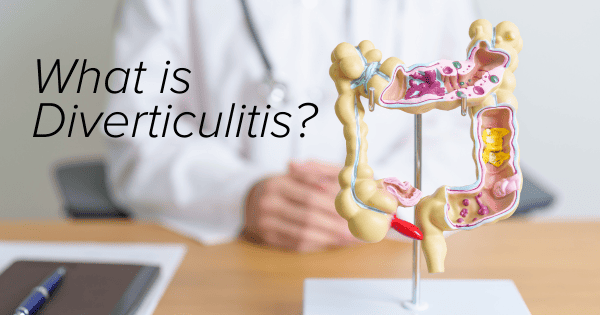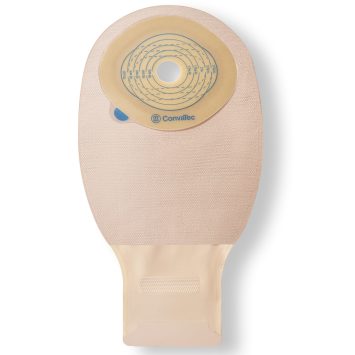Understanding Diverticulitis: What Is It?
Diverticulitis is a health condition affecting the digestive system where tiny, bulging pouches, or diverticula, form in the colon’s lining. These pouches can become infected or inflamed, leading to many symptoms and discomfort.
It is crucial to understand what diverticulitis is, its symptoms, how it is diagnosed, and how it is treated for effective management. Let’s dive into that now.
Digging Deeper: Causes and Symptoms of Diverticulitis
The exact cause of diverticulitis is not entirely known. Studies have shown it to be influenced by a low-fiber diet, aging, and lack of physical activity. A diet low in fiber can make stools hard and difficult to pass, leading to increased pressure in the colon. Over time, this pressure can cause diverticula to form.
When these diverticula become infected or inflamed, they can cause various symptoms and complications. Common symptoms include:
- Abdominal pain (usually on the left side)
- Bloating
- Constipation or diarrhea
- Bright red rectal bleeding
- Loss of appetite
- Unintentional weight loss
- Nausea and vomiting
- Fever
- Complications like abscesses, colon perforation, or fistulas
Diverticulitis can significantly impact the digestive system. The presence of diverticula can disrupt the normal flow of waste through the colon, leading to changes in bowel habits. If infection or inflammation of diverticula happens, further medical intervention may be necessary.
If you are experiencing any of these symptoms or suspect you may have diverticulitis, it’s essential to consult with your healthcare provider for a proper diagnosis and treatment plan.
Identifying the Issue: How Diverticulitis is Diagnosed
Diagnosing diverticulitis involves various tests and procedures that help healthcare professionals accurately identify the condition. These evaluations are essential for ensuring an accurate diagnosis and appropriate treatment plan.
One of the standard tests used to diagnose diverticulitis is a physical examination. During this exam, the doctor will check for tenderness in the abdomen, especially on the lower left side, which is a typical symptom of diverticulitis. They may also ask about your medical history and any symptoms you may be experiencing.
Along with a physical examination, imaging tests are often used to confirm the diagnosis. These tests may include:
- Computed Tomography (CT) scan
- Ultrasound
- Magnetic Resonance Imaging (MRI)
It is essential to have a medical evaluation for diverticulitis to rule out other conditions that may present similar symptoms. Conditions like appendicitis, inflammatory bowel disease, and colon cancer can mimic diverticulitis symptoms.
Addressing the Issue: Treatment Options for Diverticulitis
There are various non-invasive and invasive treatment options available when it comes to managing diverticulitis. The approach to treatment depends on the severity of the condition and the individual’s specific needs.
Some common non-invasive treatment options for diverticulitis include:
- Antibiotics to combat the infection and reduce inflammation and any pain.
- Diet changes to incorporate foods high in fiber like fruits, vegetables, whole grains, and legumes, as well as drinking plenty of water to help soften the stool.
- Regular exercise to increase physical activity, like walking or swimming, can help stimulate bowel movements and maintain a healthy weight.
- Stress management, like deep breathing and yoga to help reduce stress-related symptoms that may disrupt regular bowel movements.
Most of these treatments can help improve bowel function and overall well-being. Your healthcare provider can provide personalized advice and guidance to help you effectively manage diverticulitis.

In cases of severe complications or when non-invasive, conservative treatments are exhausted at alleviating symptoms, ostomy surgery may be required. This procedure involves creating an opening in the abdomen called a stoma to divert the flow of waste from the intestines into a pouch worn outside the body.
Some of the situations that would lead an individual to need ostomy surgery for diverticulitis include:
- Perforation in the colon from ruptured infected diverticula
- Fistulas that form between the colon and other organs or tissue
- Frequent recurrence or persistent symptoms that are extremely difficult to manage
How Incontinence Supplies Can Help Manage Diverticulitis Symptoms
 Incontinence supplies can play a crucial role in managing the symptoms, providing comfort and convenience for individuals navigating the challenges of diverticulitis. During flare-ups, individuals may experience increased frequency or urgency of bowel movements. Products like adult diapers or disposable underwear provide a reliable solution for managing fecal incontinence, offering comfort, discretion, and peace of mind. Underpads, bed pads, and chux can help protect furniture and bedding from accidents, maintaining cleanliness and hygiene in the home. Incontinence supplies enhance the overall management and quality of life for individuals dealing with diverticulitis by addressing worries about unintended leakage.
Incontinence supplies can play a crucial role in managing the symptoms, providing comfort and convenience for individuals navigating the challenges of diverticulitis. During flare-ups, individuals may experience increased frequency or urgency of bowel movements. Products like adult diapers or disposable underwear provide a reliable solution for managing fecal incontinence, offering comfort, discretion, and peace of mind. Underpads, bed pads, and chux can help protect furniture and bedding from accidents, maintaining cleanliness and hygiene in the home. Incontinence supplies enhance the overall management and quality of life for individuals dealing with diverticulitis by addressing worries about unintended leakage.
How Ostomy Supplies Can Help Manage Diverticulitis Symptoms
 Ostomy supplies can be instrumental in managing diverticulitis. These supplies provide a means to collect and dispose of waste efficiently, allowing individuals to maintain their hygiene and dignity while adapting to the changes in their bowel function. From ostomy pouches, skin barriers, barrier creams, and odor control products, ostomy supplies offer practical support for individuals managing diverticulitis, helping promote a better quality of life.
Ostomy supplies can be instrumental in managing diverticulitis. These supplies provide a means to collect and dispose of waste efficiently, allowing individuals to maintain their hygiene and dignity while adapting to the changes in their bowel function. From ostomy pouches, skin barriers, barrier creams, and odor control products, ostomy supplies offer practical support for individuals managing diverticulitis, helping promote a better quality of life.
Incontinence and Ostomy Supplies That Can Help Manage Diverticulitis
Disclaimer: Important Notice Regarding Medical Advice
The information provided in this blog is intended for general informational purposes only and should not be considered a substitute for professional medical advice, diagnosis, or treatment.





